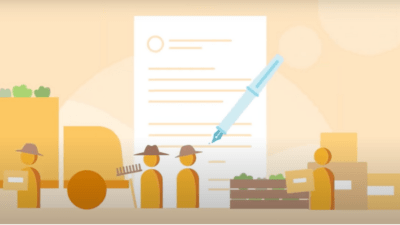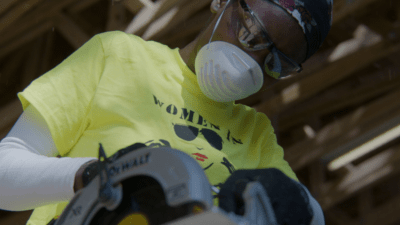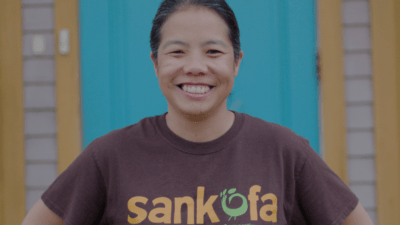This post is also available in: Español (Spanish) Kreyòl (Haitian Creole)
On August 14, 2021, a 7.2 magnitude earthquake struck Haiti’s Southern Peninsula, destroying hundreds of buildings, and killing thousands of people. Coming just over a decade after the devastating 2010 earthquake, the mid-August catastrophe overwhelmed hospitals; rendered roads impassable; reduced schools, churches, and businesses to rubble; and left thousands homeless and in search of loved ones. Unlike the outpouring of support in the aftermath of the 2010 earthquake, the 2021 response was muted. Persistent poverty, political unrest, and violence — not to mention the unrelenting natural disasters themselves – had led many to question the benefit of continued investment in Haiti.
The news media often refers to Haiti as “the poorest country in the Western Hemisphere,” and it is quick to draw attention to Haiti’s current problems every time a disaster strikes. The narrative focus on hopelessness and tragedy portrays the Caribbean nation as a “graveyard” of failed projects and perpetuates myths and misconceptions about aid and reconstruction efforts. These reports only portray one side of the story, since they often obscure both the root causes of the country’s suffering and the Haitian-led initiatives working effectively to solve them.
Contrary to the narrative that all philanthropic investments have been ineffective in Haiti, Partners In Health (PIH), Build Health International (BHI), and Health Equity International (HEI) have had immense positive impacts on the health sector in Haiti over the last decade. With sustained funding from the W.K. Kellogg Foundation (WKKF), these nongovernmental organizations (NGOs) are committed to tackling systemic inequities embedded in the health care system. They have partnered with local communities and public institutions to build more resilient health infrastructure, train and retain a competent workforce, and develop strong and functioning health systems that improve long-term health outcomes and aid in the response to acute crises in Haiti. They are proof that delivering sustainable health care in low-resource settings – in partnership with local communities and government, and with a keen understanding of local context – is not only possible, but also imperative. Examples of how to do so successfully already exist in Haiti.
Successful Health Initiatives After the 2010 Earthquake: What’s Possible a Decade Later
It starts with infrastructure – both physical and human. When the 7.0 magnitude earthquake struck Haiti on January 12, 2010, causing mass trauma and casualties across the capital region, the absence of critical care facilities was glaringly apparent. Large tertiary care facilities like the 300-bed teaching hospital in rural Haiti, Hôpital Universitaire de Mirebalais (HUM), constructed by PIH and BHI, did not exist. The hospital, a long-standing dream of the late PIH cofounder and global health visionary Dr. Paul Farmer, was built in just two years using entirely private donations, including from the W.K. Kellogg Foundation. It is now a public health care facility owned by the local government and continues to fill a huge void, locally and nationally, for Haitians who previously had limited access to quality health care.
In the aftermath of the 2010 earthquake, there was not a single Haiti-trained emergency physician in the country. With no formal medical education programs in emergency medicine, Haitian clinicians interested in studying the specialty had to go elsewhere. Unlike the 2010 earthquake, the medical response to the one in 2021 was led almost entirely by Haitian medical professionals, most of whom were trained at HUM. Largely considered a success story of post-2010 earthquake investment and coordination, HUM is the first medical institution in the Western Hemisphere to receive accreditation from the international arm of the Accreditation Council for Graduate Medical Education (ACGME-I). It hosts seven residency programs (internal and family medicine, pediatrics, surgery, obstetrics and gynecology, neurology, nurse anesthetists, and emergency medicine) that are training the next generation of Haitian health care professionals in the country.
Eleven years ago, St. Boniface Hospital (SBH), operated by HEI, was just a small community health clinic on Haiti’s southern peninsula. With sustained funding from WKKF and other philanthropic partners, the facility grew over the years to roughly five times the size it was before the 2021 earthquake. Today, SBH sees more than 500 patients a day from all over the country and delivers more than 500 babies in any given month, on par with large metropolitan hospitals in the United States. The hospital boasts the only 24-hour neonatal intensive care unit in the south of Haiti (an area of almost 3 million people). It also has surgical maternity wards and an operating room available around the clock – both still rare in rural Haiti. In 2010, to serve earthquake victims, SBH started the country’s first spinal cord injury rehab program and has since treated more than 1,000 patients.
Built to international earthquake resistant standards by BHI, the hospital has remained structurally sound and was critical to treating those injured in the 2021 earthquake. In collaboration with WKKF, HEI is now leading the medium-to-long-term earthquake recovery in the south of Haiti by rebuilding damaged community health centers, strengthening health care systems, and expanding medical grade oxygen production to address the scarcity of oxygen in the country, a problem exacerbated by the COVID-19 pandemic.
Yet the durability and effectiveness of these health care systems built in the span of a decade are a result of much more than just the number of resources available; they are rooted in how those resources are deployed, especially in the context of post-quake Haiti.
Rethinking Our Approach to Health Philanthropy
Ever since Haiti became the world’s first Black-led republic by winning its independence from France in 1804, colonial systems have persisted, perpetuating inequality and resulting in the country’s inability to effectively respond to disasters, whether man-made or natural. In the wake of such disasters, the majority of philanthropic giving goes to large, international organizations that help with immediate emergency assistance, often bypassing both the local government and Haitian-led organizations, and thus perpetuating a cycle of dependence, vulnerability, and disempowerment.
Philanthropies have unique advantages that allow them to work flexibly to rise to any challenge, but they can also work in partnership with local and national governments, private organizations, and civil society. Through long-term funding and cooperation with Haitian-led NGOs and the Haitian government, funders can do more than send aid to Haiti. We can empower a new generation to begin to reshape Haiti’s future – a future where Haitian children not only survive but also thrive in more equitable and resilient communities.
Drawing on lessons from past disasters, we are aware that contributing to such systemic change in Haiti will not be easy. In spite of the local health initiatives showcased here, much more work remains to be done to effectively dismantle the centuries-old inequities in health care and break the cycle of poverty and disease in the country. But as Dr. Farmer reminded us in his plenary remarks at GIH’s 2006 Annual Meeting on Health Philanthropy: If Haiti is riddled with challenges – as well as tremendous need for the right kind of investment – is that the beginning of a conversation or the end of one? We say it’s the beginning.








Comments